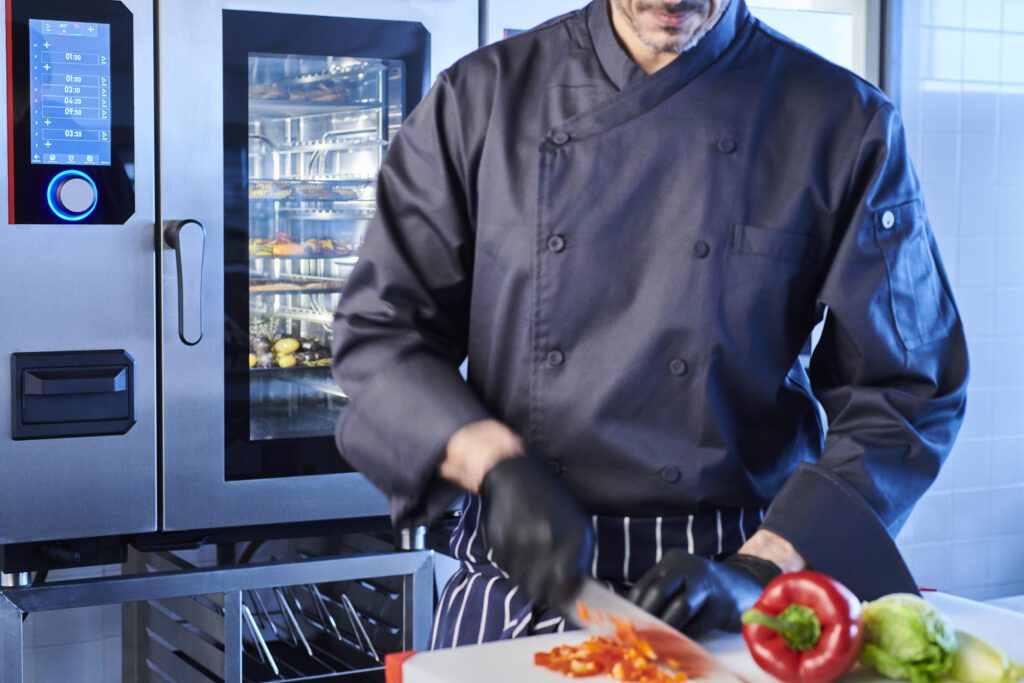News & events
News & events

Cooking Innovation Redefined

While some manufacturers can lay claim to extensive product development processes, few, if any, go to the same lengths as Hobart in their quest to create and develop equipment that makes kitchen life easier, more productive, and the relationship between human and machine that much more intuitive.
The secret to one of catering equipment’s most enduring, innovative and successful R&D pipelines isn’t really a secret at all, however. Hobart’s Customer Back Innovation programme (CBI) is the manufacturer’s long-term commitment to excellence, to listening and learning. In extreme cases its dedicated R&D teams have been known to work with operators for upwards of five years, studying the many and varied challenges they face, and working off site to develop appropriate solutions, returning with machines ready for field trial, before the test and learn process begins again in earnest.
While Hobart has long been recognised as a driving force in warewashing innovation – where the CBI process underpins every technological breakthrough – precisely the same exacting ethos is applied to its suite of leading cooking products, including the manufacturer’s latest Chef’sCombi oven.
Here, John Stewart, Hobart’s Cooking & Food Prep Product Manager, reveals how the process’s implementation led to the development of one of the most stripped back yet powerful, chef-driven machines on the market.
“Customer Back Innovation is a long-term commitment,” explains John. “It’s not just a case of sending out a survey and tweaking a product. Our process can take anywhere from two to five years, and it starts with really digging into what chefs and operators need in the kitchen.
“That means speaking directly with chefs, engineers, kitchen porters, consultants – anyone involved in the operation – to understand not just how a product performs, but how it fits into the bigger kitchen picture.
“It’s all about improving efficiency, reducing complexity, and ultimately helping operators deliver better food more easily,” says John. “We’ve always been known for that in warewashing – but it’s the same story in cooking. CBI sits at the heart of both divisions.”
Hobart’s new premium combi oven – the Chef’sCombi – is a direct result of the CBI process, stripping away unnecessary functionality to concentrate on what really matters to working kitchens, and featuring a new type of operating system, created by chefs for chefs. Its innovative design inspired by the everyday requirements of working kitchens, makes it not only powerful and intuitive but also quick and easy to maintain.
“We went out and spoke to chefs across multiple sectors – hotels, schools, healthcare, pubs and restaurants – and asked them what they needed most from a combi oven,” explains John. “That feedback shaped everything.”
From interface design and cooking functionality to training requirements and menu flexibility, every detail of the Chef’sCombi has been influenced by those who use it. For example, recurring issues flagged during research were short staffing and, as a direct result, lack of in-depth training.
“That’s why simplicity was one of our key design pillars,” says John. “We knew we had to deliver a powerful oven that could still be operated confidently by a brand-new or low-skilled user. That’s where features like the CombiGuide (an in-built cooking assistant that ensures the best cooking results, no matter who is operating the Chef’sCombi) and the simple scroll and swipe operating system, which can be customised to specific kitchen requirements, were developed.”
The CBI process doesn’t just stop at product functionality, however. The programme also examines wider market and menu trends, including consumer behaviours.
“A great example of that is our decision to introduce an air fryer mode into the Chef’sCombi,” says John. “We saw a spike in demand for healthier cooking methods, driven by calorie labelling regulations and customer expectations. We were able to build in that function in response.”
The new mode allows operators to offer a ‘healthier crunch’ using less oil, within the same cooking platform they’re already using for steaming, roasting, and baking – all without adding complexity to the workflow.
Hobart’s dedicated chef brigade, spearheaded by John, spent much of last year previewing the new Chef’sCombi, as part of an exclusive teaser campaign, to distributors, consultants, national account customers, as well as chefs and caterers across hospitality. Yet the story of innovation and development is not at its close. Indeed, one of the standout features of Hobart’s approach is that innovation doesn’t stop once a product is released.
“We treat the launch as a milestone, not a finish line,” says John. “Once the Chef’sCombi was out in the field, we kept gathering feedback from chefs using it day-to-day.”
“Our engineers hold regular development reviews. We take customer feedback and implement it into software changes. If someone says, ‘It would be great if the oven could do X,’ we’ll go away, test it, and if it works, it goes in.”
For operators, the benefit of the CBI approach is crystal clear: equipment built via dedicated fieldwork around their real needs, not assumptions made in ivory towers.
“At the end of the day, it’s about delivering equipment that performs under pressure,” says John. “CBI helps us do that by keeping the customer at the centre of everything we develop – from the first workshop to the final install, and beyond.”
